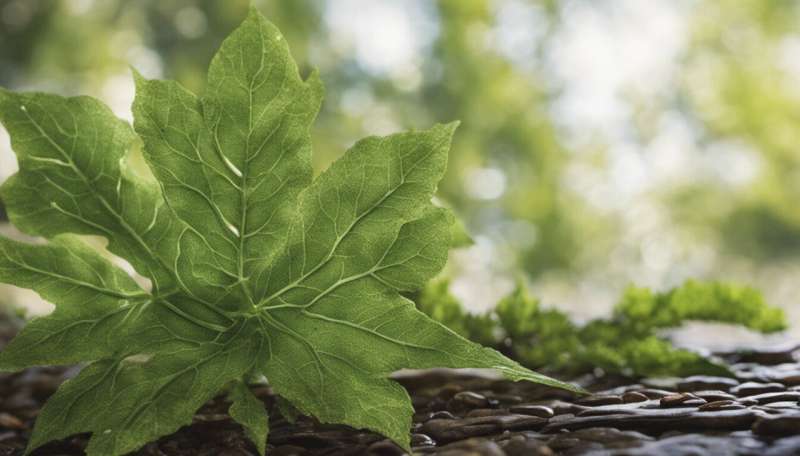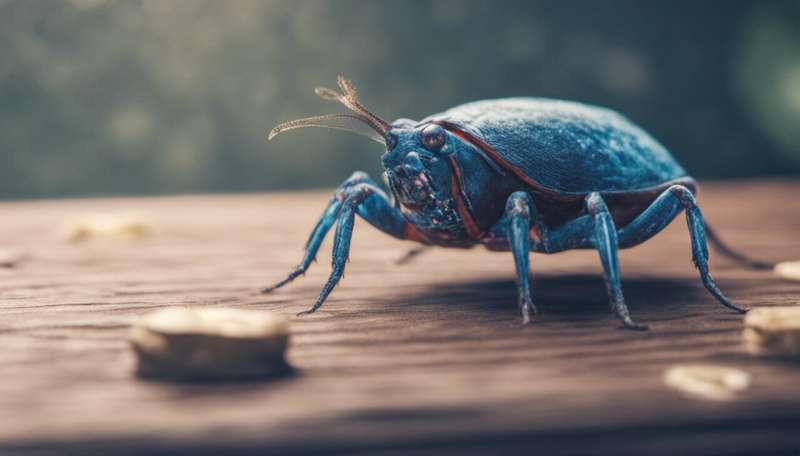This article has been reviewed according to Science X's editorial process and policies. Editors have highlighted the following attributes while ensuring the content's credibility:
fact-checked
trusted source
written by researcher(s)
proofread
What are lymph nodes? And can a massage really improve lymphatic drainage?

The lymphatic system has long been considered mysterious.
Unlike blood vessels, lymphatic vessels are not very visible to the naked eye, even during surgery. Because of this, the anatomy and functions of the lymphatic system have historically not been well studied. The fluid in the lymphatic system was named "lymph" after the Greek nymph—a mythical creature associated with clear streams—and the Roman Lympha, goddesses of fresh water.
But the lymphatic system—and the lymph nodes within it—plays fascinating and important roles in health and disease, from fighting off infection to maintain the body's fluid balance.
A major part of our immune system
The lymphatic system protects the body against foreign invaders and enables us to mount an immune response.
Lymphocytes are the cells of the lymphatic system. These are a type of white blood cell and include B cells and T cells. B cells produce antibodies to attack invading pathogens such as bacteria and viruses. T cells destroy the body's own cells if they become cancerous or infected.
Lymphocytes are mostly contained in about 700 peanut-sized lymph glands in the body. Enlarged lymph nodes, such as after a vaccination or with an infection, are due to lymphocytes mounting a protective immune response. Lymphoma is a cancer that happens when lymphocytes multiply uncontrollably and cause swollen lymph glands throughout the body.
We also have lymphatic tissue in parts our airways and digestive system because these areas are exposed to external bugs via the air we breath or the things we eat and drink. In the digestive system, the lymphatic system also has an essential role in absorbing dietary fat from the intestines.
Some lymphocytes travel around the body conducting pathogen surveillance for invading bugs. They circulate between lymph nodes, lymph and the blood.
A fine balance of fluids
Every day, about 20 liters of fluid is pushed out of capillaries—our smallest blood vessels—into tissues and organs. This is driven by blood pressure and is how tissues get oxygen and energy. About 17 liters of this fluid returns to the veins, alongside carbon dioxide and other waste products.
But what happens to the remaining 3 liters of fluid?
If it stayed in our tissues, it would cause swelling called oedema, sometimes referred to as fluid retention.
Luckily, our lymphatic vessels usually pick up this remaining 3 liters of fluid and return it to the blood circulation.
Starting in the tissues just under the skin and around our organs, the lymphatic system is a one-way circulatory system. Lymphatic vessels carry lymph from the tissues via lymph nodes and then into veins that drain directly into the heart.
A slow flow
Unlike the blood circulation, the lymphatic circulation is not driven by the pumping of the heart. Lymph is moved towards the heart by muscular contractions of the lymphatic vessels and one-way valves.

Movement, exercise and deep breathing all help to move lymph through lymphatic vessels.
It is difficult to move lymph against gravity, and lymph can accumulate and cause swelling or oedema in the legs and feet. Many people have experienced this as swollen feet after standing still for too long or sitting during a long-haul flight.
Too much fluid
Oedema can also occur when too much fluid moves out of the capillaries and overloads the capacity of the lymphatic vessels to reabsorb it.
This can be due to heart failure, chronic venous insufficiency, liver failure or kidney disease. In our research, we found 49% of people with chronic venous insufficiency (or poor blood flow in the veins) had leg oedema.
Lymphoedema is when the oedema is caused by a problem with the lymphatic system. This is commonly due to obstruction of lymph drainage or removal of lymph nodes during cancer treatment.
Treatments can help lymph flow more freely
Lymphoedema treatments include lymphatic massage, compression bandages or stockings, and exercise.
Lymphatic massage requires specialized training and an understanding of the lymphatic vessels. It involves stretching and stroking the skin to move fluid from the swollen region to a location where the lymphatic system is functioning properly.
Lymphatic massage can reduce lymphoedema associated with cancer treatment. An Australian study also reported that lymphatic massage reduced pain, depression and fatigue in cancer patients.
Increasing lymph flow back towards the heart is also essential to prevent complications like cellulitis or skin infection. A proper diagnosis should precede any treatment for lymphoedema.
You might have seen social media posts or services promising to boost lymphatic drainage for relaxation, beauty or health reasons. Lymphatic facial massage and traditional Chinese techniques of gua sha and jade rollers can increase blood flow and lymph flow, but need to be used correctly.
These treatments are best performed by someone who is trained in the anatomy of the lymphatic system and lymph flow. If you do try these yourself, light pressure is needed because the lymphatic vessels are only just under the skin. It is uncommon to have lymphoedema in the face, but increased blood flow to the skin and a nice massage are still beneficial.
To keep your lymphatic system working well, it is important to exercise, maintain a healthy weight and eat a diet that is rich in antioxidants and not high in salt.
New promise for patients
New research is examining artificial stimulation of new lymphatic vessel growth.
Better imaging techniques have allowed for clearer visualization of the lymphatic pathways and increased understanding of the lymphatic system.
The lymphatic system may not be as mysterious as it once was. However, there is still much more to be learnt about the lymphatic system and its roles in health and disease.
This article is republished from The Conversation under a Creative Commons license. Read the original article.![]()


















